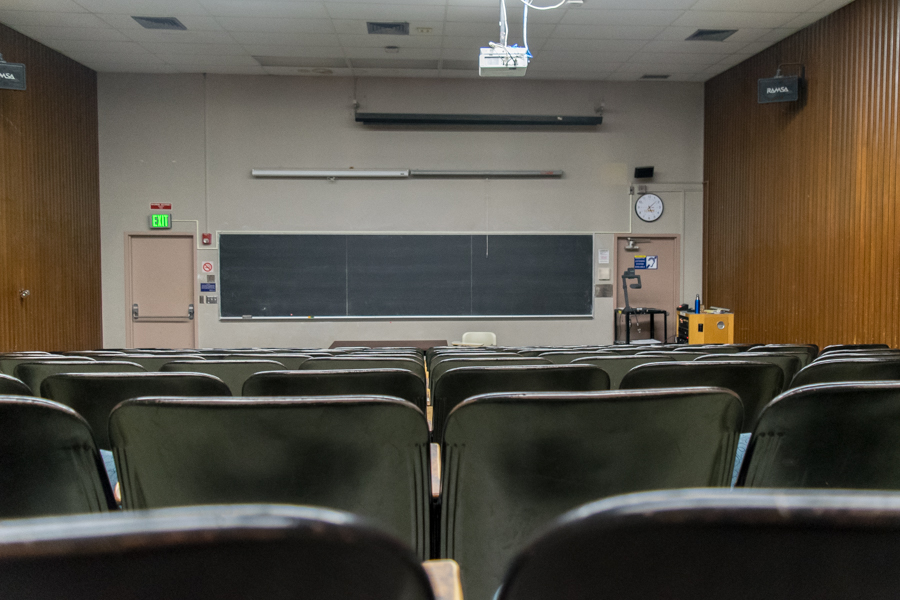
Rising cost of higher education has sent students into extreme debt
The United States has long been known as the land of opportunity, the place where any individual can form their own rags-to-riches story. While this isn’t necessarily untrue today, it’s definitely more difficult as we’ve progressed into a knowledge-based economy — where a high school diploma is no longer enough to secure employment.
In August of 2017, the unemployment rate was 2.4 percent for college graduates and 5.4 percent for high school graduates. It’s important to note that the number of people included in the labor force statistics has declined, as those with bachelor’s degrees are greatly underemployed, with many relying on internships. Student debt in the U.S. has more than doubled in the past decade — throwing in rising tuition costs and a stagnant median household income makes college campuses increasingly defined by socioeconomic status.
A popular mentality in the United States, established by the country’s notoriety as the land of opportunity, is that one should be able to “pull themselves up by the bootstraps.” No assistance, no handouts — it’s on the individual to make something of themselves. This is an argument commonly heard when discussing welfare or affordable education costs. And while pulling oneself up from the bootstraps was feasible then and now, the United States’ knowledge-based economy — in conjunction with a static median per capita income, rising tuition costs and increased student debt — has made obtaining a degree very expensive and subsequent “bootstrap pulling” that much more difficult.
Studies have shown that as family income rises, as do the chances of going to college. This has become problematic as college prices rise faster than the income levels of many Americans. It’s far more expensive for this generation of college students to attend school than it was for their parents. For the 1987-1988 school year (adjusted for inflation), students at public four-year institutions paid an average of $3,190. In 2017-18, that average rose to $9,970 — a 213 percent increase. The average tuition for a private nonprofit four-year institution was $15,160; 30 years later, that average is $34,740 — a 129 percent increase. The amount of student debt in the U.S. has greatly increased in the past decade, rising from $600 billion to $1.5 trillion, the average debt being $30,100 per borrower with women holding the majority of the debt.
Middle class families are being squeezed out of financial aid, making college campuses more rigid in the socioeconomic diversity of the student body, with wealthy students who can afford tuition on one end and poor students who receive federal Pell Grants on the other. It’s important to note that Pell Grants go to families making less than $50,000 a year, with the maximum amount of money granted being $5,920. This may provide financial relief to lower income families, but it fails to protect them from debt and also excludes many middle class families who just miss the cut off.
When adjusted for inflation, the median per capita income has largely remained unchanged since 2000; the average American family also makes slightly less than they did 15 years ago. Albeit many products have become cheaper, the cost of some of the biggest expenditures of middle class families (housing, college tuition, and health care) has increased at a rate that significantly surpasses that of inflation. The average American simply cannot keep up anymore, with more and more college students finding themselves having to pay for tuition on their own.
Technological advances, globalization and financial deregulation have created an income inequality that we have yet to bounce back from. In fact, the gap is only growing. With this growth, and with the median per capita income remaining stagnant, universities are looking to higher income families for revenue, while cutting off many middle class Americans from financial aid.
This ultimately serves to widen the gap and make universities unreflective of the economic diversity of the United States. Affordable tuition isn’t a handout nor is it indicative of American laziness; it has become a basic tool necessary for employment and for supporting oneself or one’s family. Taking on tens of thousands of dollars in debt at 18 isn’t pulling oneself up by the bootstraps — it’s financial risk, one that many don’t pay off for several decades after graduating. Graduates simply don’t make enough annual income to pay back their loans. Not everyone wants to take on debt before they’ve started their independent lives. Those who choose to pass on accumulating debt by not pursuing higher education tend to make less and are often times perceived as “less than” by degree holders. The current state of higher education institutions is set up to make affording tuition difficult and leave loans as the only answer, thereby perpetuating a cycle of student loan debt while further squeezing out middle class families. Education is becoming a more elusive tool to obtain in order to pull oneself up by the bootstraps. If we expect people to use education in this way, we should allow them to have an education in the first place.
Universities are becoming money-making industries, and student loans pay the bills. If middle class (and poor class) families continue to suffer, income inequality will only fester and perhaps, one day, we’ll hit bottom. Similar to basic needs like access to clean water, the government may need to help make access to higher education more affordable.
Written by: Hanadi Jordan — hajordan@ucdavis.edu




